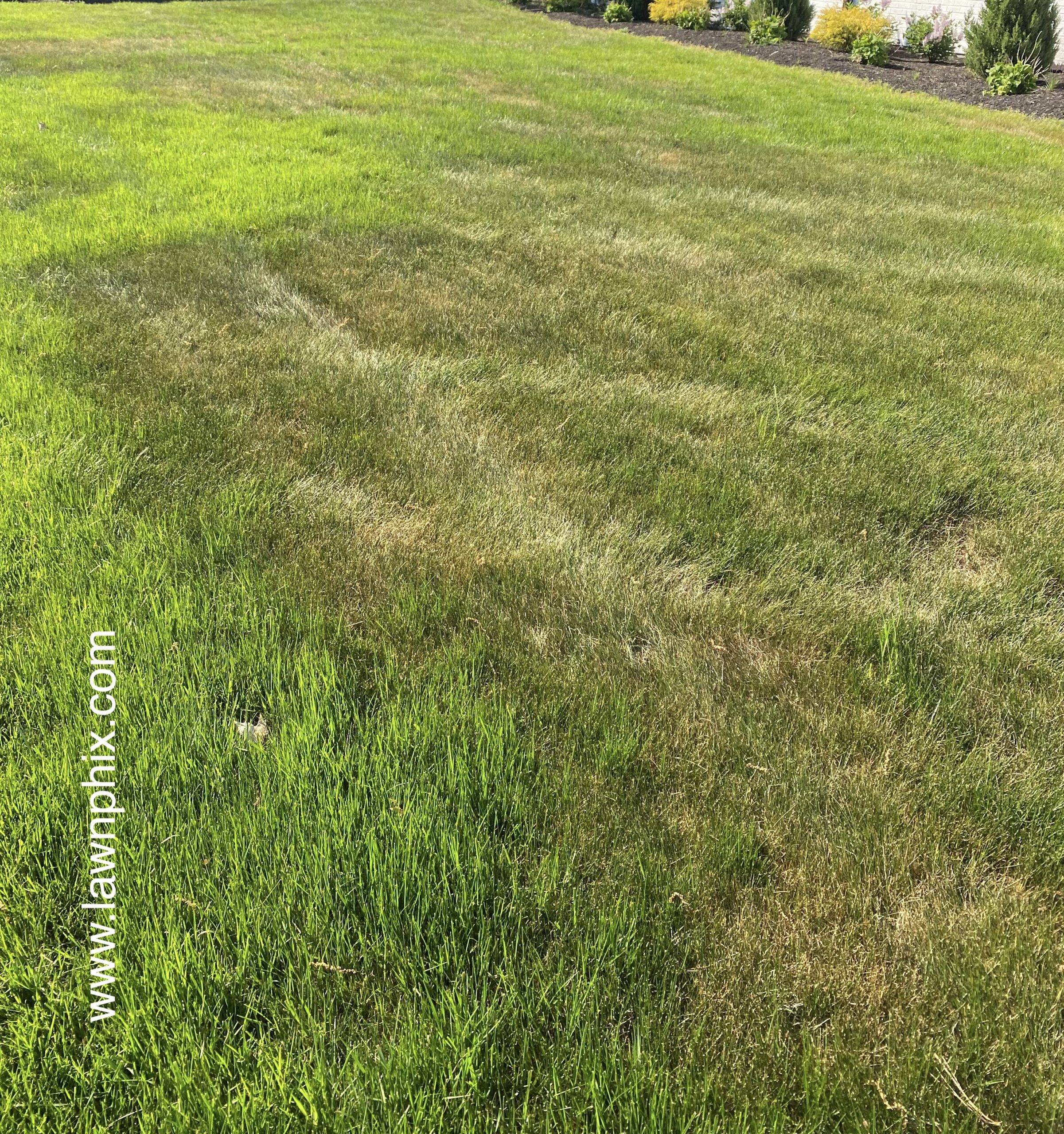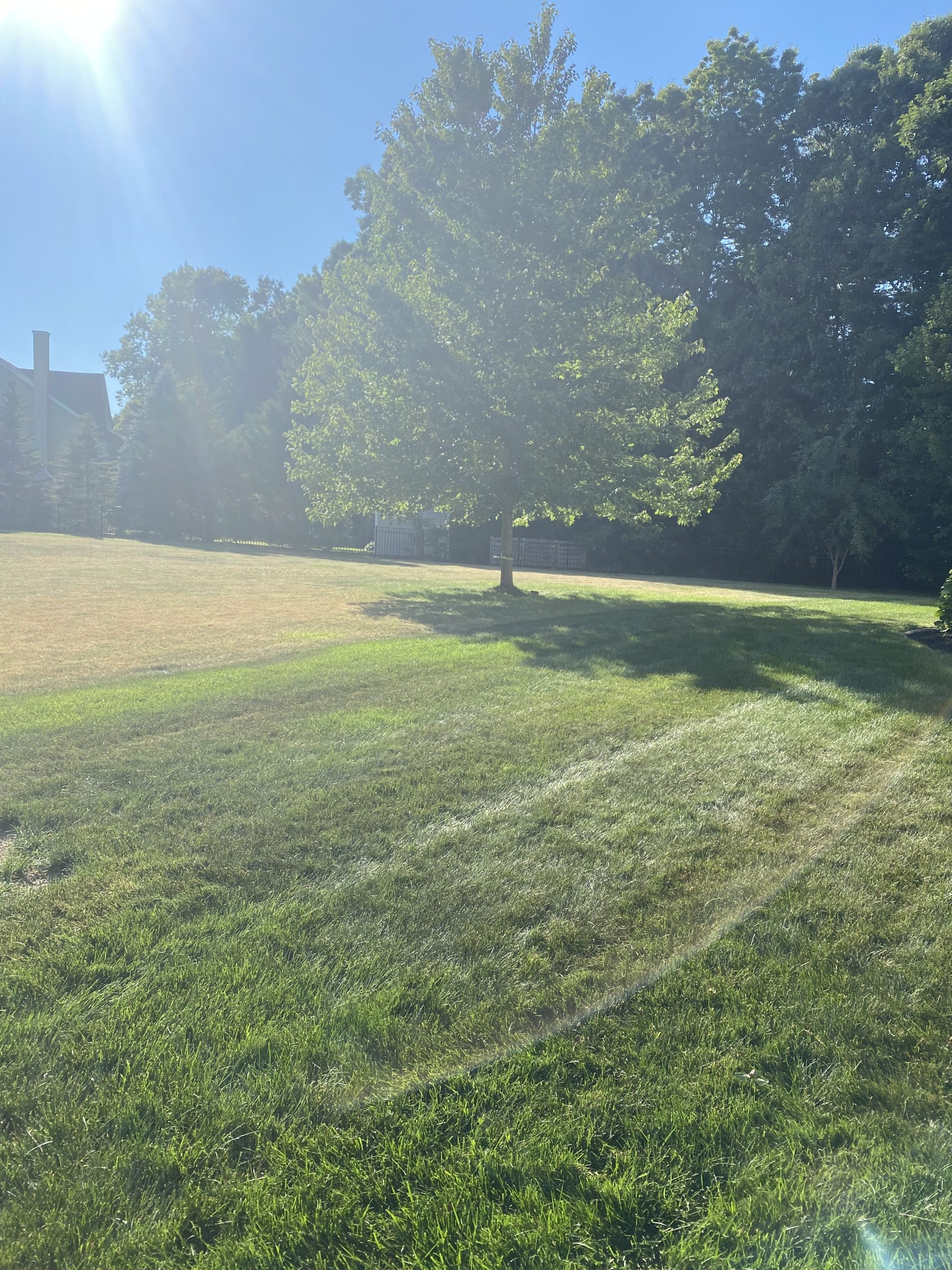Throughout the year, particularly in cool-season lawns, turfgrass can often change colors due to season, climate, and many other environmental and chemical factors. A brown lawn can indicate fungal disease or drought; an orange lawn indicates a chemical burn (herbicide or fertilizer), and a yellow lawn can indicate a lack of iron and nitrogen or overwatering.
How about blue grass? No, we’re not talking about Kentucky Bluegrass, Poa Annua, or other bluegrass varieties, but when your yard turns an actual blueish or purplish hue.
Table of Contents
Grass Turning Blue or Purple? Here’s why
If you notice the grass in your yard turning blue, particularly in warmer weather, it’s a clear indication of heat and drought stress. Before a lawn turns brown and goes dormant, it will begin to fade from green to a blue color. Below are some images showing the signs of a lack of water in the lawns.




Brown Grass
In the images above, notice how the healthy green turf fades into a blue hue before the brown dry and dormant spots. This shows poor irrigation coverage and overlap, and is a textbook sign that your lawn is dry and thirsty.
Before your lawn turns brown (when drought has kicked in and the grass has gone into dormancy) it will turn blue – which are signs of drought stress. If you water these blue grass areas especially well, they should perk and green-up. If not, it’ll quickly turn brown.
As a best practice, water your lawn deeply and infrequently to avoid heat and drought stress, and blue grass. Aim for 1/2″ of water per interval, 2-3 times per week including rainfall. Severe cases of drought may require more to full bounce back. The best time to water your grass is in the early morning.
Liquid applications of Hydretain or Moisture Manager can help retain water in your lawn’s soil. We also like to increase liquid applications of Summer Survival which contains humic acid, sea kelp, and sulfate of potash.
Blue Slime Mold
Another indication of blue grass is slime mold. Like most lawn funguses, slime mold is caused by prolonged water and moisture on grass blades. Areas of lawns with excessive thatch and poor drainage are more susceptible to blue slime mold. Generally, cultural practices are the best prevention are curative measures against slime mold, and fungicides are often not necessary.
Below are some images of slime mold in lawns.



Why does my grass look blue?
A blue hue on your grass is likely due to heat and drought stress. If your healthy green turn fades into a blue color – particularly in the warmer months – you will need to increase your irrigation.
Why does my grass have a purple tint?
A purple tint in your lawn is just light blue grass, indicating stresses from heat and drought. The purple grass will also have a blue-ish and grey-ish hue just before the grass turns brown and goes dormant.
Why is my grass changing color?
Discoloring lawn turf can mean many things. Blue grass or purple grass is a sign of drought and heat stress (increase your watering). Brown grass usually can indicate fungus or drought. Orange grass indicates a chemical burn (herbicide or fertilizer). A yellow lawn can be a lack of iron and nitrogen or overwatering.


Great breakdown of what the color of grass can indicate! This will be a good reference and tool.